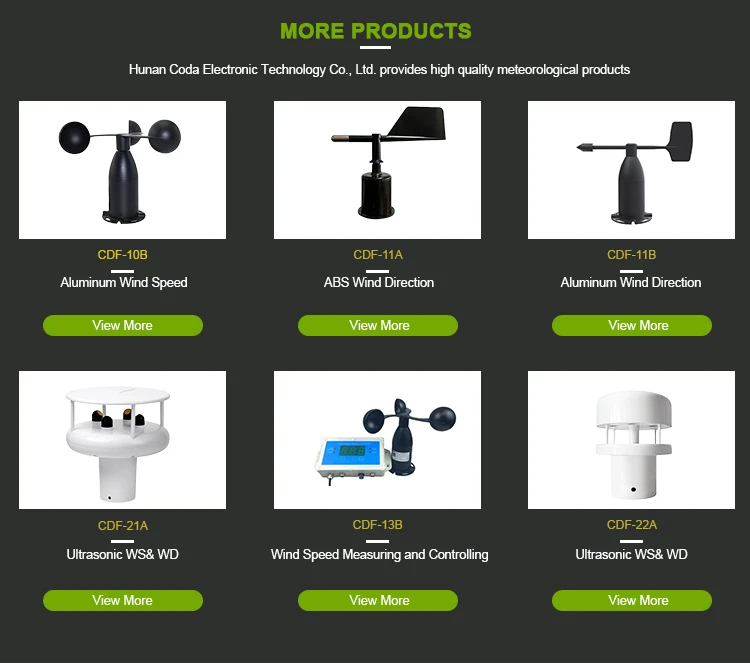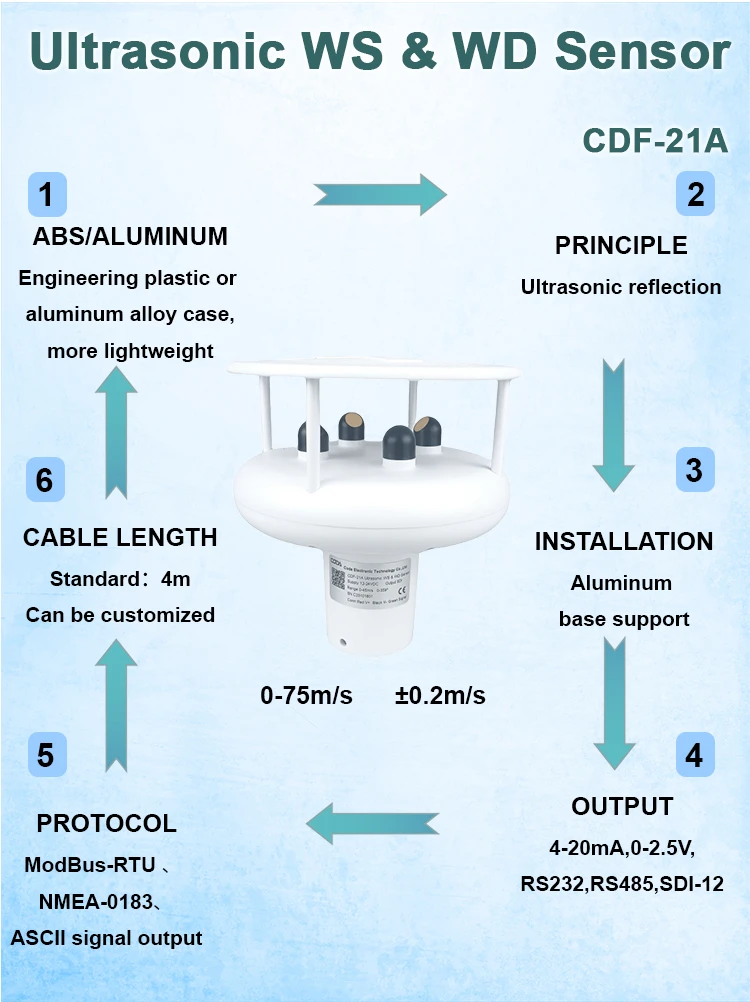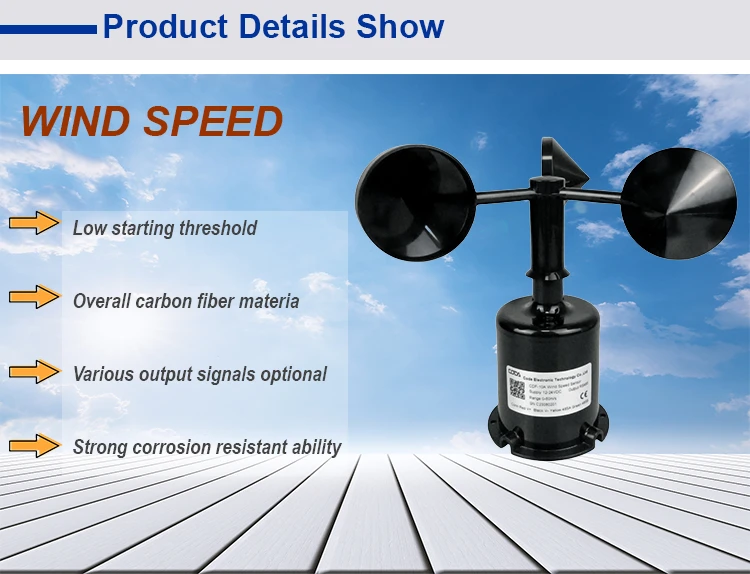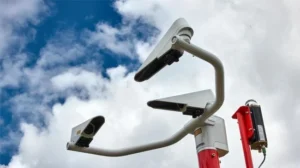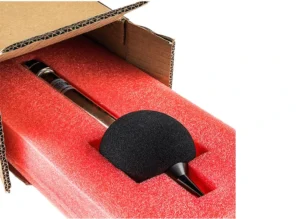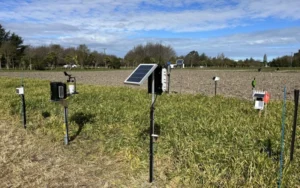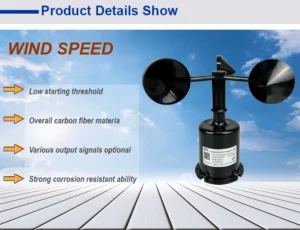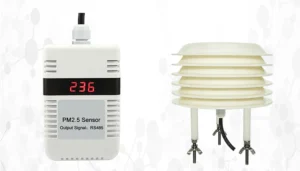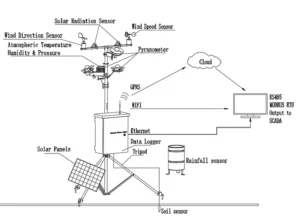Wind Speed Sensors vs. Anemometers
Both wind speed sensors and anemometers measure wind speed, but they have different designs and uses. Knowing these differences helps you choose the right device for your needs. This discussion will cover their unique features, benefits, drawbacks, and what to think about when making your choice.
**What Are Wind Speed Sensors?**
Wind speed sensors measure how fast the wind blows. They use technology to be accurate. A common type is the cup anemometer.
This device has three or more cups on a spinning shaft. When the wind moves the cups, the speed of rotation shows how fast the wind is blowing.
Sonic anemometers are a type of wind speed sensor that use sound waves. They have no moving parts, which makes them durable and resistant to wear. However, they usually cost more than traditional cup anemometers.
These sensors are great for tasks that need accuracy and constant data collection. This includes weather studies, environmental monitoring, and safety systems in industries. They provide reliable measurements that are important for key operations.
**What Are Anemometers?**
Anemometers measure how fast the wind blows and can show which way it is blowing. They come in many designs. Most have moving parts like cups, vanes, or propellers. These parts connect to a dial or a screen.
Cup anemometers are often used to measure wind speed. You can find them at weather stations and for fun activities. Vane anemometers measure both wind speed and direction. Propeller anemometers are more accurate at high wind speeds due to their special design.
These useful devices are used in many areas, such as weather forecasting, HVAC system analysis, sailing, and kite sports. They are simple to use and give quick results with enough accuracy for most daily needs.
**Accuracy and Precision: Key Distinction**
A key difference between the two is accuracy. Wind speed sensors are often more precise than anemometers. They use advanced technology, like sound wave measurement, for better reliability. This makes them important in situations that need accurate data collection.
While anemometers might not match the same level of precision, they remain dependable in typical measurements. Their accuracy depends on factors such as device design, materials used, and how well-calibrated the instrument is.
When choosing between the two, think about how much accuracy you need. If your tasks need careful data interpretation, a wind speed sensor is probably the best choice. On the other hand, for regular measurements at a lower cost, an anemometer may be enough.
**Cost and Maintenance Considerations**
The price matters when picking a device. Wind speed sensors often cost more due to their advanced features and accuracy. Their price can vary based on the brand, model, and included features.
Anemometers are good choices for people who want a low-cost option. They work well for those who don’t need high accuracy. However, buyers should think about long-term costs for calibration and maintenance. Some models may need more care to keep giving steady results over time.
To find the right tool for you, think about your needs. Look at the application, accuracy, and budget. This will help you decide if a wind speed sensor or an anemometer is best.
For maintenance, wind speed sensors are often more durable than anemometers. They need calibration less often. This makes them a cost-effective choice over time, as they can reduce maintenance costs.
Wind speed sensors can be expensive at first. It is important to look at both the initial cost and the long-term benefits before picking the right device.
Evaluating the Right Instrument for Your Needs
When choosing between a wind speed sensor and an anemometer, it’s important to consider your needs. Wind speed sensors are great for tasks that need accurate wind measurements.
This includes scientific research and industrial work. These sensors are made to perform well in various weather. They are ideal for situations where reliable data is crucial.
Anemometers are a cheap way to measure wind. They are perfect for users who want something easy to use. These devices are flexible and simple to operate.
You can find anemometers in many places, like weather stations and sports activities. They work well when basic features are enough. Their low cost and ease of use make them popular for everyday needs.
In the end, choosing between a wind speed sensor and an anemometer depends on your needs and budget. Wind speed sensors are more accurate and reliable.
Anemometers are a practical and cost-effective option for many uses. By thinking about factors like accuracy, cost, and maintenance, you can find the best device for your needs. This will help you get reliable wind speed measurements.
conclusion
Both wind speed sensors and anemometers are useful tools for different needs. Wind speed sensors are known for their high accuracy and reliability in tough situations. Anemometers, on the other hand, offer a more affordable and easy-to-use option for everyday use.
To choose the right tool for your needs, consider key factors like precision, cost, durability, and ease of use. This will help you collect accurate data for different applications.
